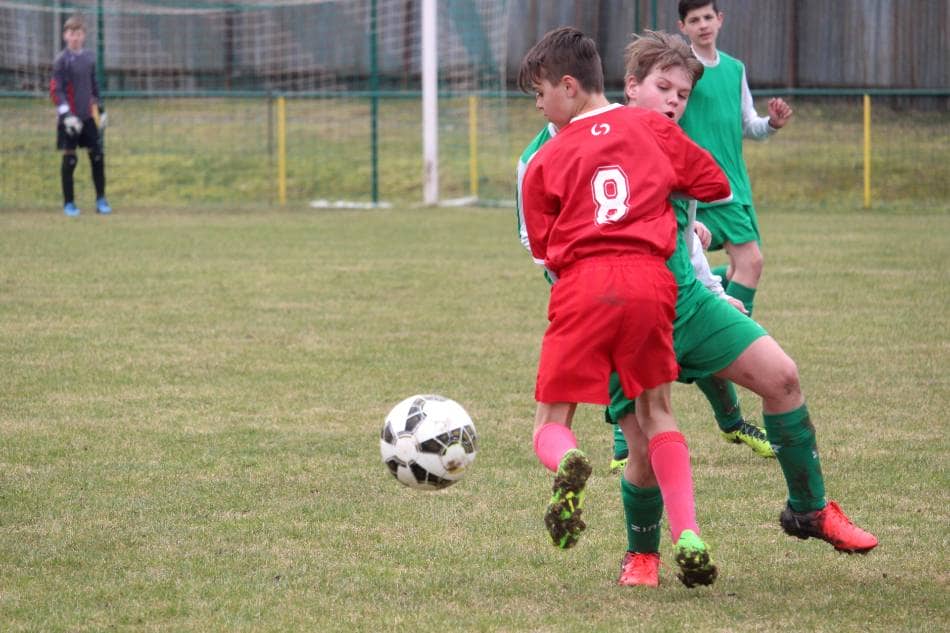

Some of the most confusing elements within the game of soccer are penalties and the different kinds of fouls that are called. If you have ever watched a game of soccer you’ve likely seen a penalty kick or the referee brandishing a yellow or red card to a player. But why are some fouls deemed worse than others and why are some worthy of a penalty? Before we go too far into detail, we need to consider…what is a foul in soccer? A foul is any action by a player that gives an unfair advantage to one team, endangers the well-being of an opponent, or is unsportsmanlike. A free-kick or penalty kick is issued to the team that was fouled and if the foul is considered severe than a yellow or red card may be issued. It is important to know that referees call fouls to protect players on the field and to preserve the integrity of the game. Without a system to call fouls in place, most games would divulge into chaos. Thankfully, a system is in place and we’ll cover it extensively throughout this article.
Fouls can occur anywhere on the field and by any player. After a foul is called, the fouled player/team is given a set-piece or “free kick” from the spot of the foul. Fouling in soccer is like fouling in any other sport. If a team has been judged to have unfairly altered the flow of the game, then they are punished for it. Soccer is unique, however, because the degree to which a player or team is punished depends on the location and severity of the foul as well as the match official’s discretion. You’ll hear the term “the official’s discretion” throughout this article and that is because while there are clear definitions for fouls and what does or does not constitute one, not all officials call a game in the same way. You might have referees who are more lenient or strict depending on their interpretation of the rules as well as their philosophy for governing a match. Some officials tend to be more lenient and let play continue without stopping the match every time a foul is committed. This philosophy is more “laissez-faire” believing that the game will even itself out over time and that intervening should only be done for truly egregious acts. Conversely, you have officials who are more “by the book” and call just about everything to prevent things from escalating and someone getting hurt.

A penalty is a foul which occurs within the 18-yard box near a team’s goal. These fouls are only by the defending team against the attacking team within that 18-yard box. If an attacking player is fouled in the box, then that team gets to take a penalty shot on goal. These shots are taken from 12-yards away from the center of the goal, with only the goalkeeper defending the net. These fouls do not necessarily mean the offending player receives a yellow or red card but could depending on the nature of the foul and the referee’s discretion. Penalties are often decisive factors within a game because the likelihood of scoring from a penalty is very high. The official must use their understanding of the Laws of the Game as well as their discretion to determine whether a foul in the 18-yard box warrants a penalty. These sorts of calls are not always black and white. There are many fouls that might be given in the field of play, but if they happen within the penalty area, a referee may not call them for fear of altering the match too much. Attacking players also often use deceitful means to try and earn a penalty for their team. This phenomenon is known as “diving”, “penalty-hunting” and “flopping”. Just google something like “worst dives in soccer” and you will see what we mean here.
A “Free-Kick” is the reward given to the fouled team and initiates the restart of play after a foul. These can be either “Direct” or “Indirect” which describes how the restart occurs.
A direct free-kick is the most common kind of restart. These involve fouls that occurred due to contact with another player (a slide tackle, body check, etc). The fouled team places the ball at the spot of the foul and can either pass to a teammate or make a direct attempt at goal depending on the distance from the goal.
An indirect free-kick is less common but occurs when a foul is committed which does not involve contact with another player (such as screening or shielding) or when the goalkeeper commits an error. The most common examples are when a player passes the ball back to their goalkeeper with their feet and the goalkeeper picks it up, the goalkeeper holds the ball for longer than 6-seconds, or the goalkeeper catches the ball from his team directly on a throw-in. Teams awarded an indirect free-kick must have another player touch the ball before it goes into the net to be counted as a goal. If a foul warranting an indirect free kick occurs in the box, a penalty isn’t awarded.

Yellow cards or “Cautionable Offenses” are warnings given to players that committing a similar offense will be grounds for being sent off. These offenses may be intentionally fouling an opponent to stop the passage of play (often coined as “tactical fouls”), insubordination to the match officials (arguing with a call, verbally abusive language or trying to deceive an official), or are fouls which endanger an opponent’s well-being. Red cards or “Sending-Offs” are fouls deemed to be “serious foul play” under the Laws of the Game. These occur when a player commits a foul that seriously endangers an opponent, is malicious, or “denies an obvious goal-scoring opportunity.” The official will show the offending player a red card and that player must immediately leave the field of play. The offending team then plays the rest of the game down a player. Additionally, a red card may be earned by committing two “Cautionable Offenses” within a game and receiving a “second yellow.” Often the difference between which card is shown is how the official perceives the “intent” of the foul. For example, as mentioned “tactical fouls” are often a yellow card because it is an intentional act but is often not dangerous (think pulling a shirt or a slight body check). Then you have the “handball” rule. While only a goalkeeper can handle the ball in the field of play, not every “handball” warrants a card due to a lack of intent. On the other hand, if a player intentionally handles the ball then a red card is the result. In the 2010 World Cup Uruguay’s Luis Suarez was sent off for intentionally handling a ball on the goal line to deny Ghana a clear goal. (Seriously, google it and watch what happens next! Soccer can be a cruel game.) Again, an official’s discretion on what is a red or yellow card may not be the same. For a perfect example of this, check out the foul committed by Dutch player Nigel De Jong on Spain’s Xabi Alonso in the final of the 2010 World Cup. It was by the letter of the law a straight red card but the match official, Howard Webb, only gave him a yellow (a decision he would later admit was a mistake).
With all this subjectivity in officiating there exists a measure of frustration in the game because something that is a stone-cold red card for one official may not be for another (like above). Referees are also humans and make mistakes and miss things on the field. There is a long list of offenses, non-calls, and straight-up mistakes in the history of the game that fans will point to and say “this is unacceptable.” Until recently, there was no way for officials to review incidents and correct mistakes. Enter VAR.
VAR or “Video Assistant Referee” is a fairly new system that was pioneered by Howard Webb (the official of the 2010 World Cup Final). It was developed to help referees review things they may have missed or correct obvious mistakes. A video assistant referee is an official who reviews moments in a game and alerts the on-field official to potential mistakes. The most important phrase to remember with VAR is “clear and obvious errors.” To ensure that the game would continue to flow freely and be free of constant delays, it was decided that a VAR would only be initiated if something was “clear and obvious” and only on certain types of calls. The kinds of calls that are “reviewable” are goals, red cards, offside, and mistaken identity. Only in an instance like the video above where a foul should have “clearly and obviously” been called, would it go to a review. The catch with VAR is that “official’s discretion” hasn’t been eliminated from the game. Every country that uses VAR in their league has a different implementation and threshold for what should and shouldn’t go to review. The pioneer league for VAR was the United States’ Major League Soccer who upheld the “clear and obvious” threshold. So a play will only go to a review if both the VAR official and on-field official agree that an error has occurred. The on-field official is notified that review may be warranted and then must decide if VAR should review the situation. If the official decides to go this route, they will use a monitor on the sideline where the VAR official will show them the incident in question from multiple angles. After review, the match official must then decide if the call should be changed or not. VAR is a wonderful tool but it will never eliminate the subjectivity from the game. Part of the beauty of soccer is that it is free-flowing and subjective even in its officiating. Soccer is the beautiful game but it also has its ugly moments! Fouls, penalties, free-kicks, and video assistant referees are as much a part of the game as goals and assists, but they often can be confusing and difficult to understand. Hopefully, you now have a better understanding of the uglier side of the beautiful game and you can now watch the sport with a firmer grasp on how fouls and penalties work.
My name is Steven and I love everything sports! I created this website to share my passion with all of you. Enjoy!